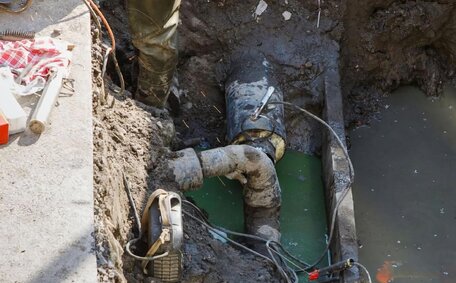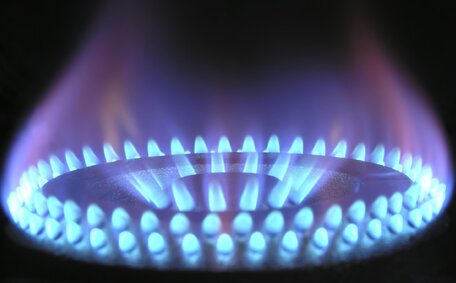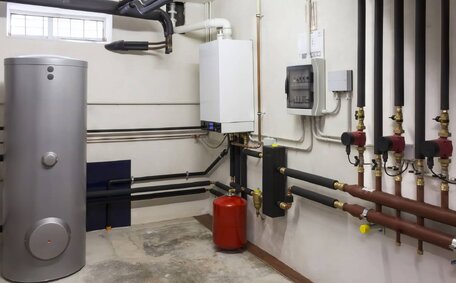
Sump Pump Failure Solutions
Sump pumps fail due to power outages, clogs, frozen pipes, and more. Prevent water damage by understanding causes and contacting plumbers for solutions to extend pump life.
Read MoreA home provides comfort, safety, and warmth — it is pivotal, especially for our little ones. It’s a dedicated space where they learn, explore, and naturally, push boundaries through their curiosity. One area of great fascination is the kitchen, more specifically, the enticing knobs and buttons on the gas stove. Childproofing gas appliances becomes an essential task, then, to keep these inquisitive young minds safe.
However, ensuring this safely can pose a considerable challenge.
While gas appliances are indispensable in modern households, they pose unique dangers to children, including potential burns, accidental gas leaks, and the risk of carbon monoxide poisoning. Implementing safety measures, like using childproof covers on stove knobs, effective ventilation, keeping an eye out for possible leaks and installing a carbon monoxide detector can significantly reduce these risks.
Our comprehensive guide explores effective childproofing strategies for gas stoves, elucidates the importance of monitoring indoor air quality, and highlights the significance of regular appliance checks.
So, whether you’re a parent, caregiver, or simply a concerned friend, read on. Let’s create a safe haven for little explorers without putting a damper on their joy of discovery.
Do you remember that moment when you first noticed your toddler’s innocent fascination with the colourful, turning knobs of the gas stove? Or when you found your child curiously reaching towards the warm oven door?
While a child’s curiosity can be enchanting, these scenarios can quickly become nightmares. Therefore, understanding and actively implementing childproofing measures for gas appliances is paramount.
The threat extends beyond minor burns or cuts that pose a threat. There’s the possibility of accidental gas leaks leading to potential fire hazards or even asphyxiation incidents. Therefore, it’s crucial to know when to gas the stove safely. More subtle yet equally dangerous is the risk associated with prolonged exposure to carbon monoxide, a colourless, odorous gas that could lead to serious health issues.
As a responsible caregiver, there’s a lot to consider. Safety knobs, stove barriers, and latch systems are all integral parts of a comprehensive childproofing strategy. The regular inspection of your gas appliances by professionals, like those at Cronulla Plumbing, also falls into this domain. They can ensure that your gas systems are running optimally and are in tip-top shape, thus drastically reducing any potential risks.
So, while your child continues to explore the world with laughter and curiosity, you can ensure their safety in the kitchen, providing an environment that nurtures their curiosity and growth, under the crucial supervision of a protective eye.
When considering potential hazards within the home, the stove ranks high on the list, particularly in households with children. Alarmingly, the Royal Children’s Hospital in Melbourne reports that over half of child burns are caused by contact with a hot appliance or surface.
Although the risks of physical burns from a lit gas stove, perhaps more obscure are those stemming from accidental gas leaks or ‘invisible’ threats like carbon monoxide poisoning.
Methane, the primary constituent of natural gas, is not toxic under normal circumstances. However, lingering leaks can displace oxygen in the household air and lead to instances of asphyxiation over time.
Incomplete combustion of natural gas can result in carbon monoxide, a dangerous, odourless, and colourless gas.
Prolonged exposure to carbon monoxide can lead to symptoms ranging from mild headaches and dizziness to, in extreme cases, fatal consequences. Prolonged exposure to carbon monoxide can lead to symptoms ranging from mild headaches and dizziness to, in extreme cases, fatal consequences.
Therefore, addressing these risks involves more than just telling children not to play with the stove. It demands keen foresight, proactive measures, and diligence in monitoring. It requires the installation of proper safety measures, ensuring good ventilation, regular appliance inspections and overall, a proactive approach towards preserving the sanctity of your child’s space for exploration and growth.
Gas stoves, Despite being common in many homes, gas stoves have been linked to worsening respiratory conditions in children, including asthma. The freely accessible knobs, constant heat, and fumes are frequent sources of fascination and, unfortunately, potential perils.
According to the National Asthma Council Australia, children living in homes with gas stoves are 42% more likely to exhibit ongoing asthma symptoms. The reason lies in the nitrogen dioxide levels in homes with gas appliances, which are often substantially higher than what is considered safe.
When a gas stove is operational, it releases pollutants, including nitrogen dioxide, carbon monoxide, and formaldehyde. Combined with other contributing factors, these potentially toxic emissions can exacerbate or contribute to developing respiratory issues like asthma in susceptible children.
Hence, proactive steps need to be taken for knob safety, especially to safeguard the health of your oven knobs. Using the back burners of the stove, where possible, can limit children’s exposure to heat and flames. Similarly, removing the stove knobs when not in use can substantially reduce the risk of accidental ignition, gas leaks and ensuing air pollution.
Remember, these measures are not mere options, but necessities to provide a secure space for your inquisitive little ones as they navigate the world around them, inclusive of the seemingly mundane household kitchen which opens new avenues of learning.
Childproofing your gas stove requires a mix of proactive measures and routine checks. Here are some feasible steps on how to ensure safety in your kitchen:
Remember, a child’s curiosity knows no bounds. The kitchen can become a playground of discovery for them. Don’t stifle their curiosity; instead, employ these childproofing measures to ensure that your kitchen remains a secure environment for them to continue exploring.
An integral piece of every effective child safety strategy for gas stoves knob involves the use of gas stove knob covers, which effectively covers help meet child safety regulations. These items serve a dual purpose - they not only cater to a child’s sense of exploration, but more importantly, they add a vital layer of protection.
Specifically, oven knob covers help in ensuring child safety by acting as plastic shields that fit over your stove’s knobs. They enable adults to turn stove appliances unaffected while preventing little hands from accidentally triggering a potential gas leak or fire. These stove knob covers are typically universal; they conveniently fit over most stove knob sizes while being easy to install and remove for cleaning.
Oven guards, on the other hand, are a protective barrier that restricts access to the oven door and effectively control when to use oven. Some oven guards come outfitted with a heat-resistant lid, further offering protection against accidental burns.
This reduces the risk of a child sustaining burns from trying to open the hot oven glass, or one when the oven tips over if the door acts as a step for a climbing child.
In essence, stove knob covers and oven guards act as silent supervisors in the kitchen. They provide an immediate and active layer of defence against common and subtler kitchen dangers alike.
By making these safety tools part of your daily kitchen management, you’re investing not just in your child’s safety, but also in their freedom to explore, learn, and grow in a risk-reduced environment.
In the pursuit of minimising risks in your kitchen, two straightforward yet impactful measures can be adopted - using back burners and removing stove knobs when not in use.
Situating your pot pan cooking at the rear of the stove serves a dual purpose. Firstly, it ensures that the flames or heated surfaces produced by the cooking gas are well beyond the reach of young explorers, thereby reducing chances of accidental burns. Secondly, any pots or pans in use are rendered less visible, and thus, less tempting for curious minds.
The removal of gas knob elements on your stove is another equally purposeful strategy. By simply removing your stove knobs post-cooking, i would eliminate this risk and further secure your kitchen space.
Despite their seemingly harmless appearance, the stove can hold the potential for serious gas leaks or even fires, if knobs are accidentally switched on. It’s crucial, nonetheless, for your baby’s safety, to remember always to store these knobs safely out of a child’s reach.
Cronulla Plumbing firmly believes that practising such preventive measures should form part of your routine. Even the simplest steps, when engrained as habit, can provide substantial safety outcomes.
By securing your cooking arena, you’re not disincentivising curiosity - instead, you’re allowing discovery within a protected environment, fostering a sense of caution along with a spirit of exploration for your child.
As the hub of various cooking activities, naturally witnesses prominent changes in indoor air quality. Proper ventilation becomes a crucial aspect to limit any potential adverse effects, especially in households with gas stoves.
Primarily, good ventilation prevents the build-up of harmful gases, such as carbon monoxide, a by-product of incomplete combustion in gas stoves. Its odourless, colourless nature makes it particularly dangerous, causing health problems ranging from headaches and nausea to more severe outcomes in high concentrations.
Installing an exhaust fan or maintaining an open window, for example, can aid in dispersing these gases and ensure the indoor air stays fresh. Remember, adequate ventilation complements safe usage of your gas stove; it’s not an alternative, but an imperative addition for maintaining good indoor air quality.
Regardless of your ventilation, a carbon monoxide detector is a must. It serves as an early warning system alerting you to dangerous levels of this invisible threat in your home. When regularly tested and maintained, it serves as a crucial line of defence against a lethal hazard that might otherwise go unnoticed.
At Cronulla Plumbing, we hold safety as paramount. We encourage homeowners to take these measures not as optional but essential parts of maintaining a secure environment at home, where your child can grow and thrive in a risk-reduced atmosphere.
Navigating the plethora of safety products and the overload of information can make childproofing gas appliances seem overwhelming. Despite the best intentions and rigorous measures, there might be unforeseen gaps in your safety strategy. This is where professional expertise can use your plays into play.
Consulting professionals like Cronulla Plumbing can provide a comprehensive safety assessment of your home’s gas appliances. Their trained eyes can spot potential hazards that could be overlooked in a DIY approach, especially when safeguarding your little one. They can provide recommendations tailored to your home and family needs, ensuring that your childproofing efforts are truly effective.
From regular inspections and maintenance checks of gas appliances to advice on the latest safety devices, Cronulla Plumbing delivers services that uphold the highest safety standards. Our professionals understand that your peace of mind comes from knowing that your home is a safe place for your children to explore.
You wouldn’t want to compromise on the safety of your loved ones, and sometimes this might mean having to use smaller, safer appliances. Let’s work together, ensuring your delight at your child’s curiosity isn’t tinged with worry.
Connect with us today via email, phone call, or appointment and be ready to kick-start your journey to a child-friendly kitchen. Let’s strive to create an environment where little fingers can roam freely amidst laughter and learning, and kitchens serve as spaces of discovery and joy.
Ensuring your home, particularly your kitchen, is safe for your curious children need not be an expensive undertaking. Here are some budget-friendly tips to childproof your gas appliances:
Remember, the safety of your loved ones can be ensured with expenses that are less than a steep price. What really counts is the insight, care and vigilance you put into crafting a safe space where they can learn, grow and fulfil their inherent curiosity.
When it comes to choosing a stove, two prominent options often spring to mind – gas and electric - and your choice will hinge on your cooking preference and safety measures in place. Each possesses its advantages and potential drawbacks, with preferences usually based on factors like price, efficiency, and personal cooking style.
No matter the type of stove you favour, staying mindful of safety, particularly where curious children are involved, should always take precedence. Always remember, the joy of your child’s exploratory freedoms should not be overshadowed by concerns for their safety.
As we unravel the many faces of curiosity displayed by your child, it’s crucial we implement secure measures within spaces they frequent the most, such as using a safety stove safety in your kitchen.
Understanding the dangers associated with gas stoves is paramount. From physical burns to carbon monoxide poisoning, the risks are real and sometimes invisible. Empowering yourself with knowledge and preventative techniques can pave the way to creating a safer environment.
Adopt proactive measures like using stove knob covers, removing knobs when not in use, and employing oven guards for added protection. Ensure optimum ventilation in your kitchen and install carbon monoxide detectors to alert you of any hazardous gas accumulation.
Lastly, consulting professionals can be highly beneficial.
Professionals like those at Cronulla Plumbing can carry out thorough inspections, advise on potential risks, and recommend the most effective safety measures tailored to your family’s needs. Through these conscious efforts and steps, you can ensure your kitchen remains a haven for your inquisitive explorers where they can safely self-educate, grow and satiate their curiosity.
Sump pumps fail due to power outages, clogs, frozen pipes, and more. Prevent water damage by understanding causes and contacting plumbers for solutions to extend pump life.
Read MoreIf your monthly gas bill rises suddenly for no clear reason, the cause could be a gas leak from old pipes or appliances. Contact your provider to investigate.
Read MoreScale buildup reduces the efficiency of hot water systems over time. Regular descaling helps remove this. Flush your system with vinegar or a descaling solution.
Read MoreCronulla, 2230 NSW
We will call back as soon as possible.




